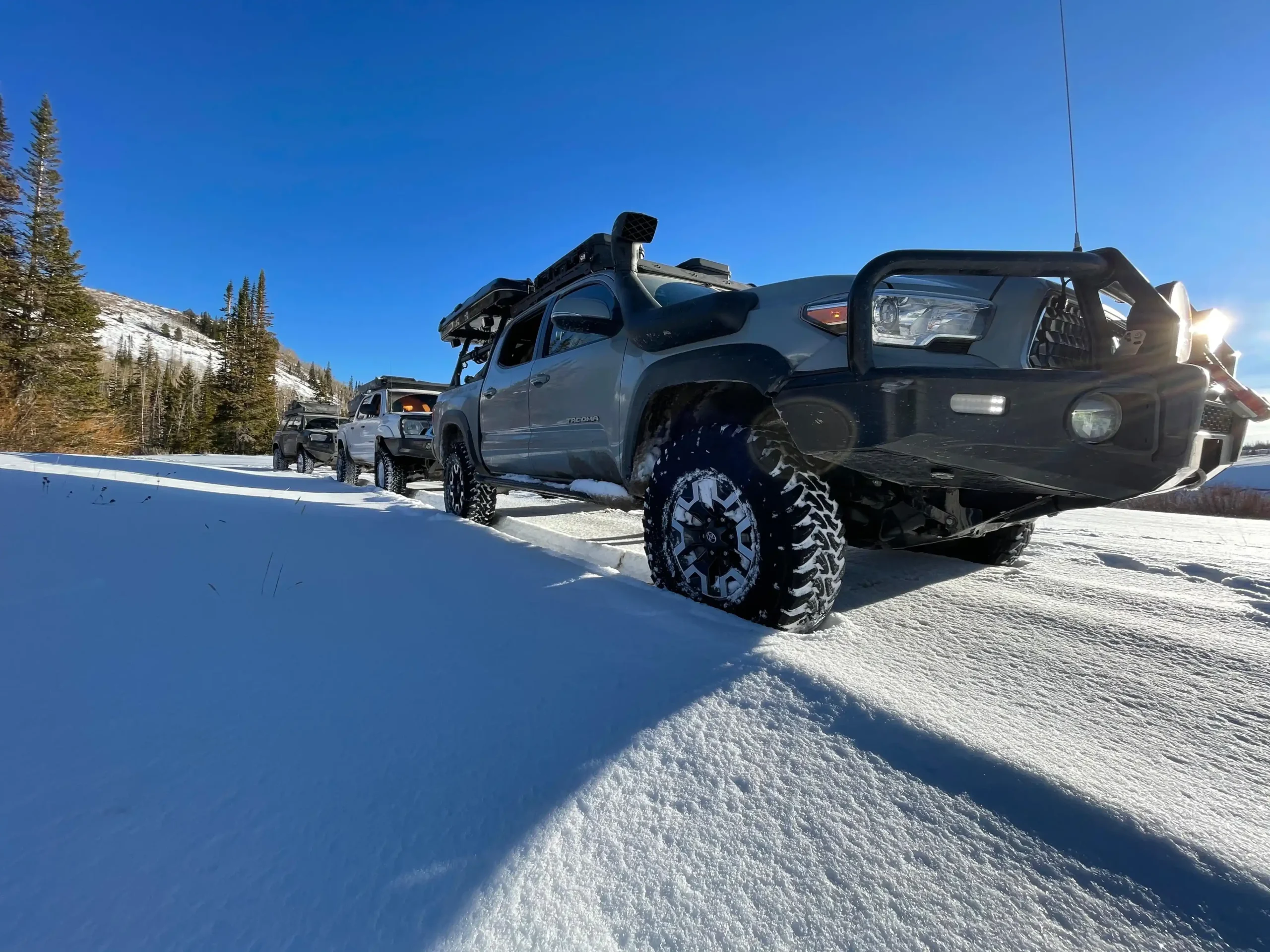
Expert Advice for Winter Camping in a Rooftop Tent
7 Jan, 2025
Winter camping offers beautiful snowy landscapes, tranquility, and fewer crowds in popular destinations. However, winter camping also comes with its own set of challenges. If you are new to rooftop tents, you might find that camping in cold conditions is easier than with a ground tent—but you might encounter some new challenges from being off the ground. To help you through them, this guide is going to skip the generic advice (you already know to wear layers and bring hand warmers) and focus specifically on rooftop tent camping in winter conditions.
Yes, you can use a rooftop tent in winter. In fact, there are many benefits to using a rooftop tent in winter.
Compared to ground tents, rooftop tents are:
But, just like with ground tents, not all rooftop tents are suitable for winter camping. You’ll need one that has these features if you plan on camping in harsh, cold conditions.
Hard Shell
While you can use a softshell rooftop tent in winter conditions, hard shell rooftop tents are generally the better choice because of their faster setup and takedown.
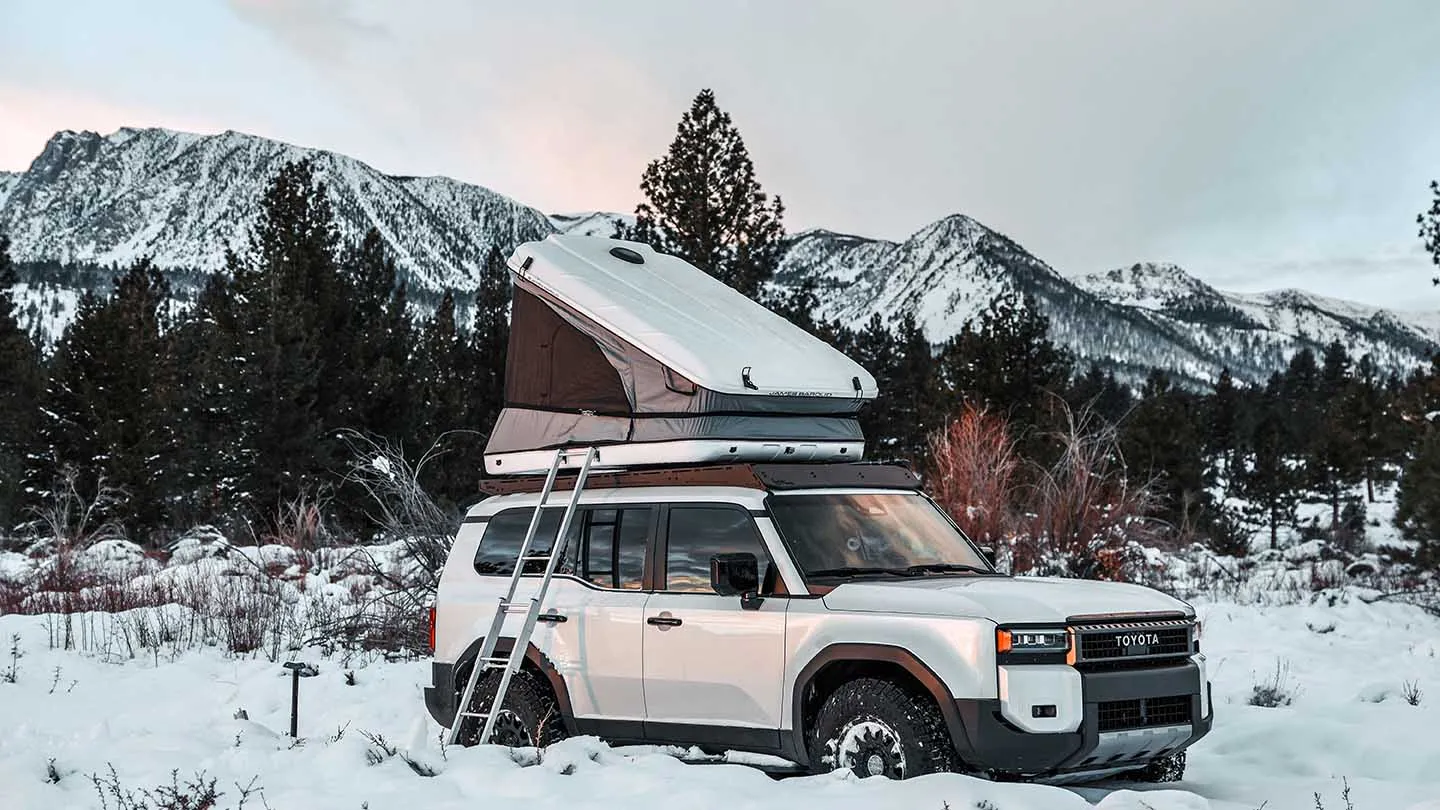
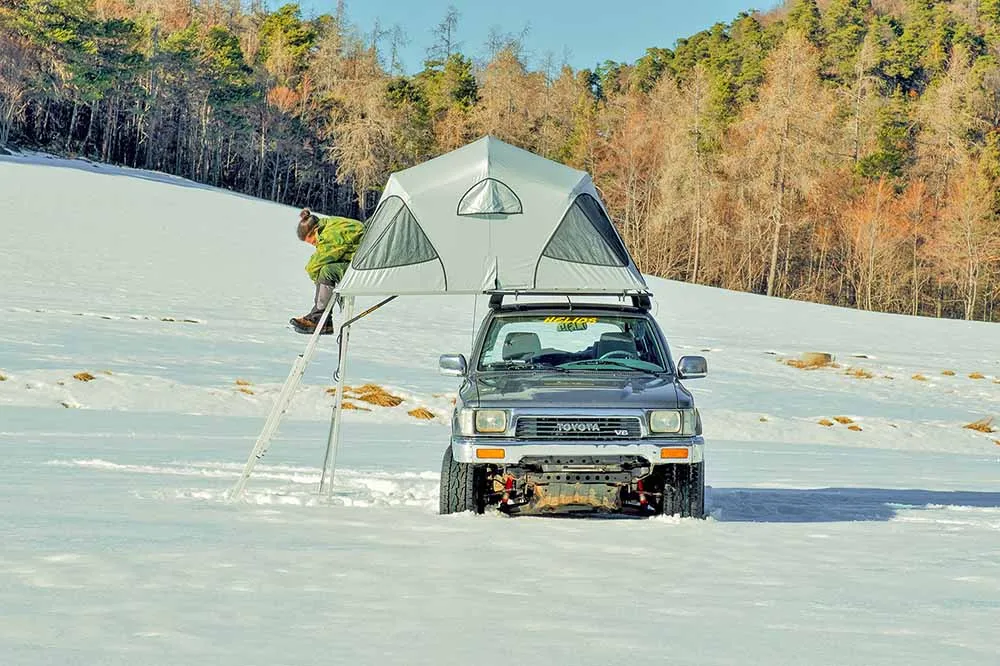
Windproof and Waterproof Material
A rooftop tent’s material can make a huge difference to your comfort in any season, but is especially important in winter. You need a material which is thick enough to block wind and keep snow out. It’s also nice when the material is silent, so you don’t have to listen to it flapping all night when the wind is blowing at 75 mph.
Durable Construction
Whether you choose a hard shell or softshell, ensure the tent is durable enough to withstand heavy winds and snowfall. This is especially important if you have a flat-topped tent (aka straight-up or parallel-opening rooftop tents). Compared to clamshell rooftop tents, they aren’t as aerodynamic against winds and don’t naturally shed snow, so will need to be exceptionally strong.
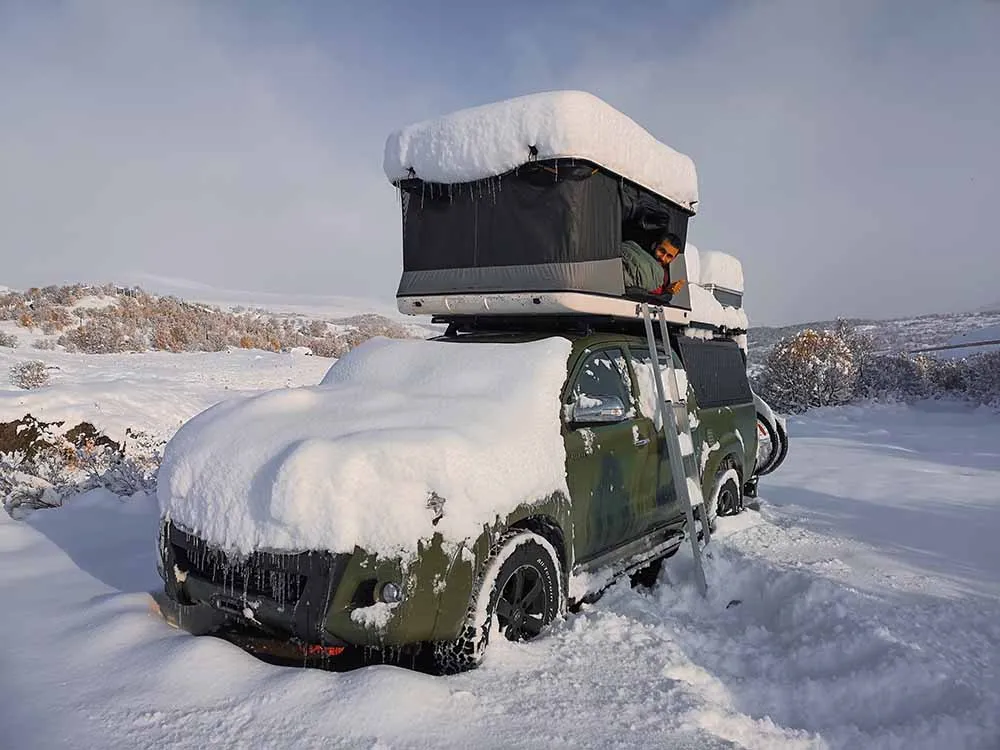
Good Ventilation
Condensation can be a huge problem when camping in cold temperatures. Unless you want to wake up in a puddle of water, you’ll need a rooftop tent with good ventilation to let moisture out. James Baroud rooftop tents have built-in exhaust fans to help prevent this.
Insulating Mattress
For winter camping in a rooftop tent, you will need a higher-quality mattress. Look for one made out of thick, dense foam as these do a good job of preventing heat loss from below. If your rooftop tent has a thin mattress or air mattress, you will need to buy an insulating pad to put on top of it.
Pro Fact
Foam mattresses get stiff in cold weather and might not feel as comfortable immediately. Don’t worry—it will become softer as it warms from your body heat.
Ladder Can Be Stowed Inside
In harsh conditions, you may want to bring your tent ladder inside so it doesn’t get covered with snow and ice. This isn’t possible with all rooftop tents because many use the ladder as a support stand, so the ladder must always be extended when the tent is up.
Also read: How to Choose a Rooftop Tent
Rooftop Tent Takedown in Snow
If you have a hard shell rooftop tent, then setup and takedown is the same even in winter conditions. However, if you have a softshell model, then you will need to take care to get snow off the tent before closing it. Here’s why:
Softshell rooftop tents typically fold over on themselves to close. If you do this when there is snow on the roof, the snow can press through the material and cause the interior of the tent to get wet. This isn’t a big issue on trips where you won’t switch locations—you can just open the tent when you get home so it can dry out. However, if you will switch locations on your trip, you might find yourself facing damp bedding when you open it.
Having a rooftop tent made out of a high-quality, multi-layer fabric will go a long way to prevent this from happening. But, if your softshell rooftop tent isn’t the best quality material, you will want to use a brush to remove as much snow as possible, and maybe also run a towel over it, before closing it.
Pro Tip
Practice deploying your rooftop tent with gloves on. It’s also smart to keep a snow brush handy so you can clean snow out of latches. This is something you should have in your vehicle anyway in winter.
Staying Warm in a Rooftop Tent in Winter
While rooftop tents are generally warmer than ground tents, you still may want to take some measures to stay warm inside. Electric blankets, insulation panels, and diesel heaters are all good solutions.
Electric Blankets
Electric blankets are common with rooftop tent campers. They use a lot of power, so you probably won’t be able to run one the entire night. However, they are great taking the edge off the cold when going to bed or waking up. Just plug it into a portable power station in your tent.
Insulation Panels
Hanging insulation on your tent walls will help trap your body heat, making it warmer inside the tent. Some campers improvise insulation out of blankets, but this can be annoying to put up and makes it harder to get in/out of the tent. Instead, you may want to get an insulation kit for your rooftop tent.
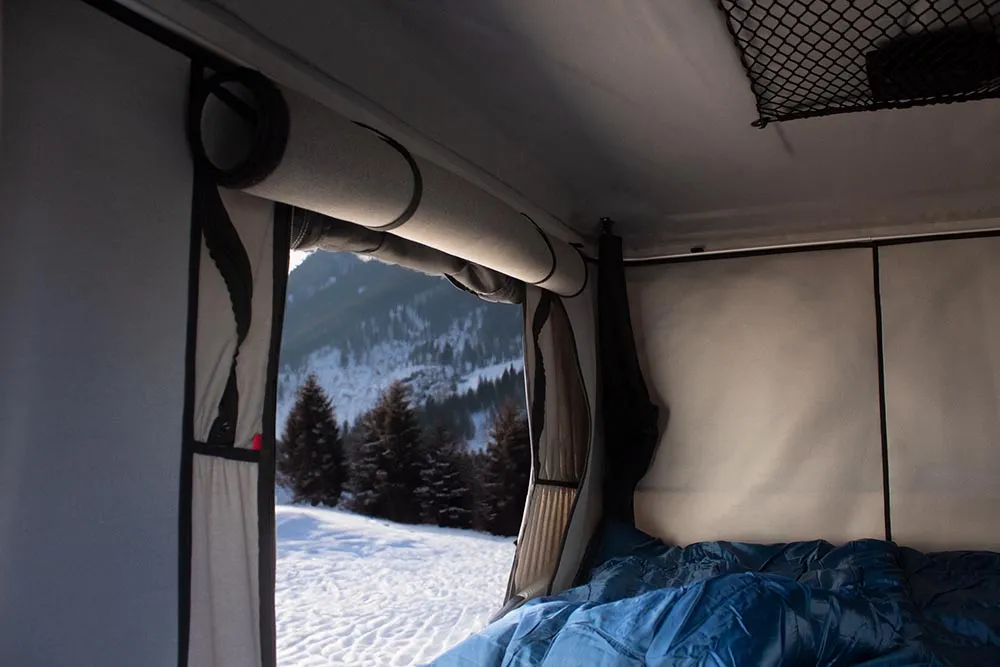
Diesel Heaters
The thicker material of a rooftop tent traps heat well, making them ideal for using with a diesel heater. The diesel heater remains outside of the tent and ducts pump the hot air into the tent through an opening in the window or a port.
Diesel heaters produce dry heat, so won’t contribute to condensation in the tent. By contrast, propane heaters add moisture to the air, so aren’t recommended for tents. You will need a battery source for the diesel heater, such as a portable power station. Don’t run the heater off your vehicle battery or you risk waking up to a dead vehicle.
Important
Even though rooftop tents are naturally warmer than ground tents, don’t rely on the tent to keep you warm. Remember, a tent is a shelter. Its job is to protect you from the elements. Your sleeping bag or quilt is what keeps you warm.
Likewise, you shouldn’t rely on tent heaters or electric blankets to keep you warm: if they fail, you won’t have a way to stay warm.
Consider an Annex Room for Harsh Conditions
One of the downsides of rooftop tents in winter is that they don’t have vestibules, which means you won’t have a sheltered area for things like removing your boots. As a result, you risk tracking snow into your tent or having snow blast into the tent when you open the door.
To solve these problems, consider investing in an enclosed rooftop tent annex.
A rooftop tent annex is essentially a room that attaches to your tent’s entrance. While useful in all seasons, an enclosed annex is especially great to having for winter camping.
The annex provides several key benefits, including:
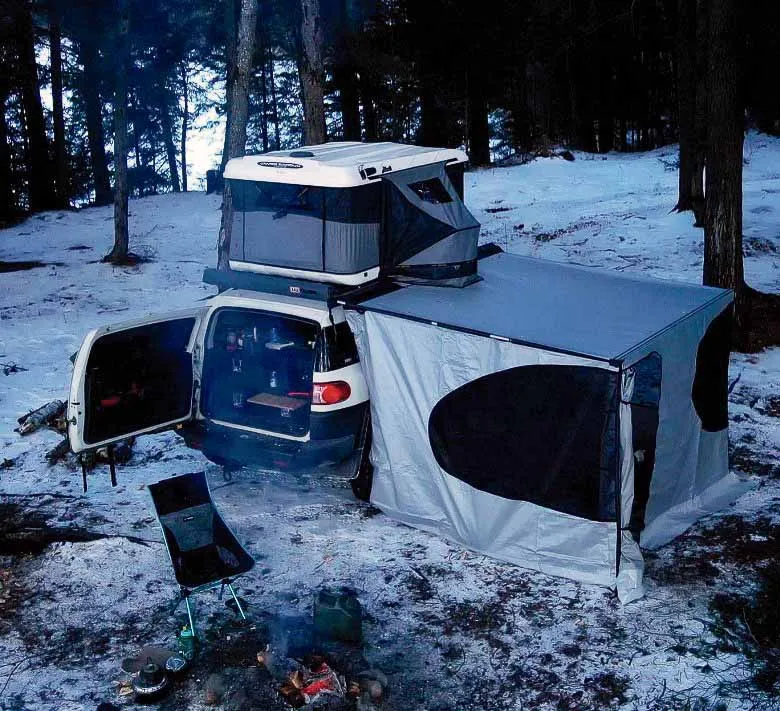
Preventing Condensation in a Rooftop Tent
If you’ve camped in cold weather, you may have noticed condensation on the inside of your tent. It occurs when the warm air inside the tent hits the cooler tent walls. As the warm air cools, it loses its ability to hold moisture, causing the water vapor to condense into droplets on the inside of the tent.
Regardless of what type of tent you have, some condensation is almost inevitable when camping in winter. It’s especially bad in humid or wet conditions. However, because humans exhale and perspire moisture, condensation can still occur in dry conditions.
Unless you want to wake up wet and cold, you need to take steps to prevent condensation in your rooftop tent.
Pro Fact
On average, a person will exhale or perspire ½ to 1 liter of water during an eight-hour night of sleep. On cold nights, this water can accumulate on the tent walls. (Source)
Open a Window
While it may seem counterintuitive to open a window in winter, it will release moisture buildup in the tent, helping to prevent condensation.
Vent During the Day
On multi-day camping trips, leave the rooftop tent up and open a window. This will help dry out the interior of the tent, reducing condensation buildup.
Use the Ventilation Fan
James Baroud rooftop tents have built-in fans. These aren’t just for hot weather. In cold temperatures, the fan vents moisture out of the tent, preventing condensation. Keep in mind that batteries don’t last as long in cold conditions and recharging with solar power isn’t always viable in winter either.
Get an Anti-Condensation Mat
Anti-condensation mats go beneath your tent mattress .They are made out of a special mesh material that allows air to flow through it, creating an air gap between the mattress and tent floor so condensation doesn’t build up. They are a crucial upgrade for preventing condensation and especially important for keeping your mattress dry on extended trips.
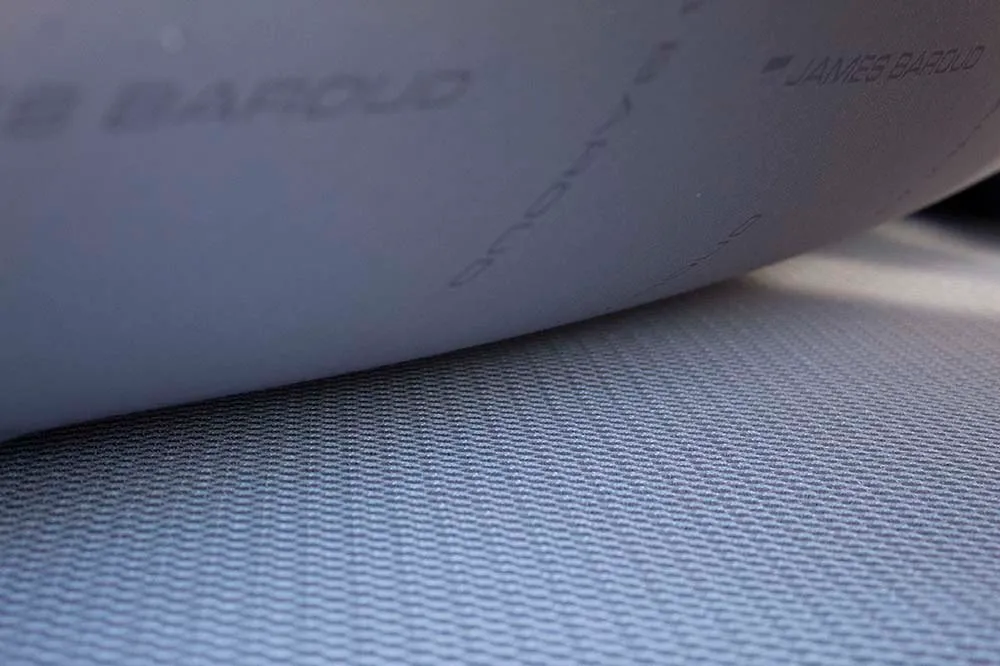
Keep Wet Gear Out of the Tent
Any wet gear that you bring in the tent will contribute to condensation. So, try to keep all wet gear out of the tent and never use your tent for drying gear overnight.
Cover Metal Surfaces
Metal surfaces gets much colder than fabric or plastic, making them prime spots for condensation to form. Cold metal is also uncomfortable to touch. To avoid this, cover metal surfaces inside the tent with fabric or insulation to reduce water buildup.
Dry Out Everything When You Get Home
If your rooftop tent does get wet from condensation, it’s important that you dry it as soon as possible. Open up the tent when you get home and allow it to vent. If you don’t have an anti-condensation pad, you may need to remove the mattress or prop it up to allow for better drying.
Share your winter adventures!
We are always interested in hearing from our community. If you have any pictures, videos, or stories from your winter adventures, please share them with us and we may feature you in an upcoming post.
